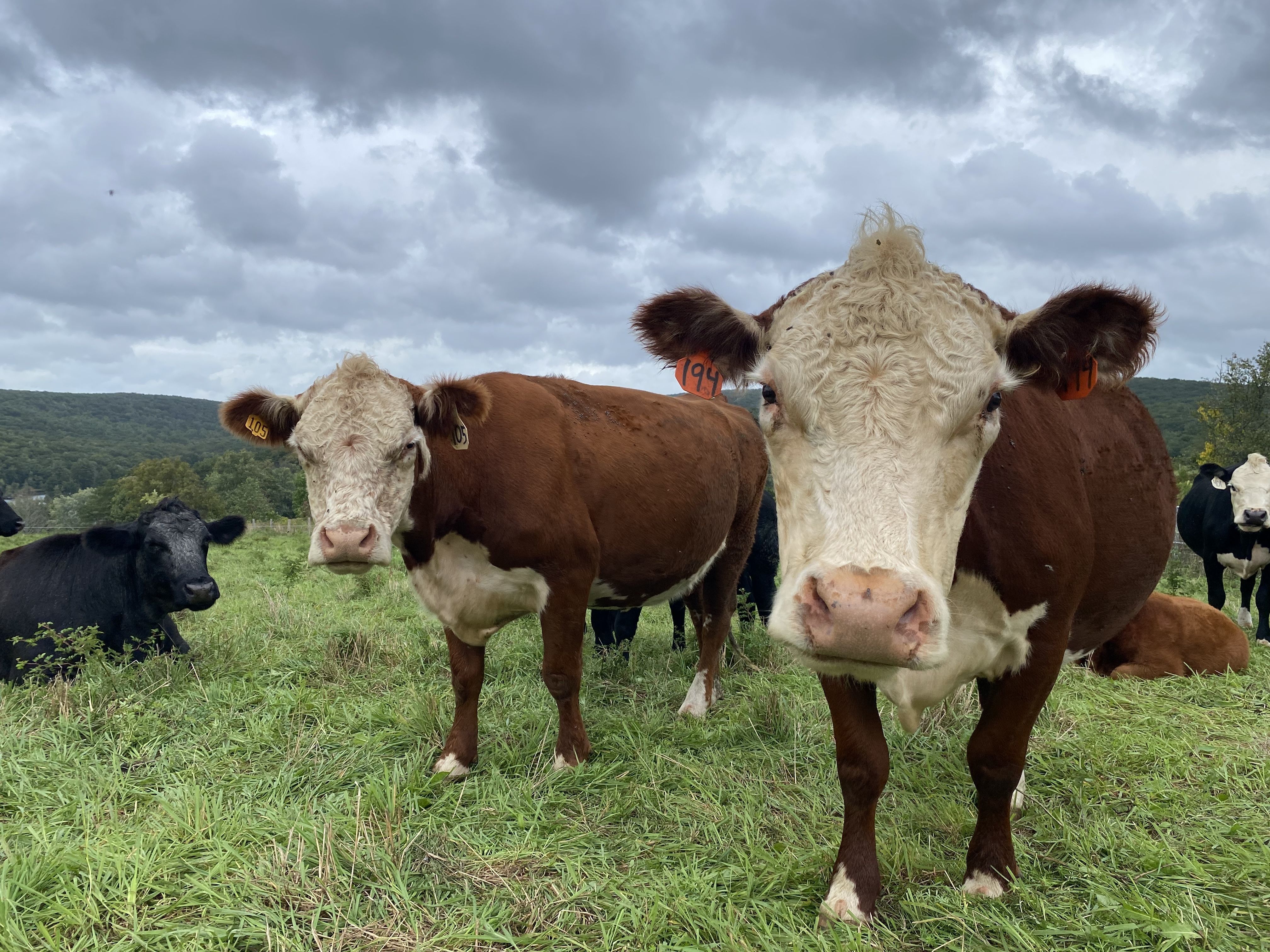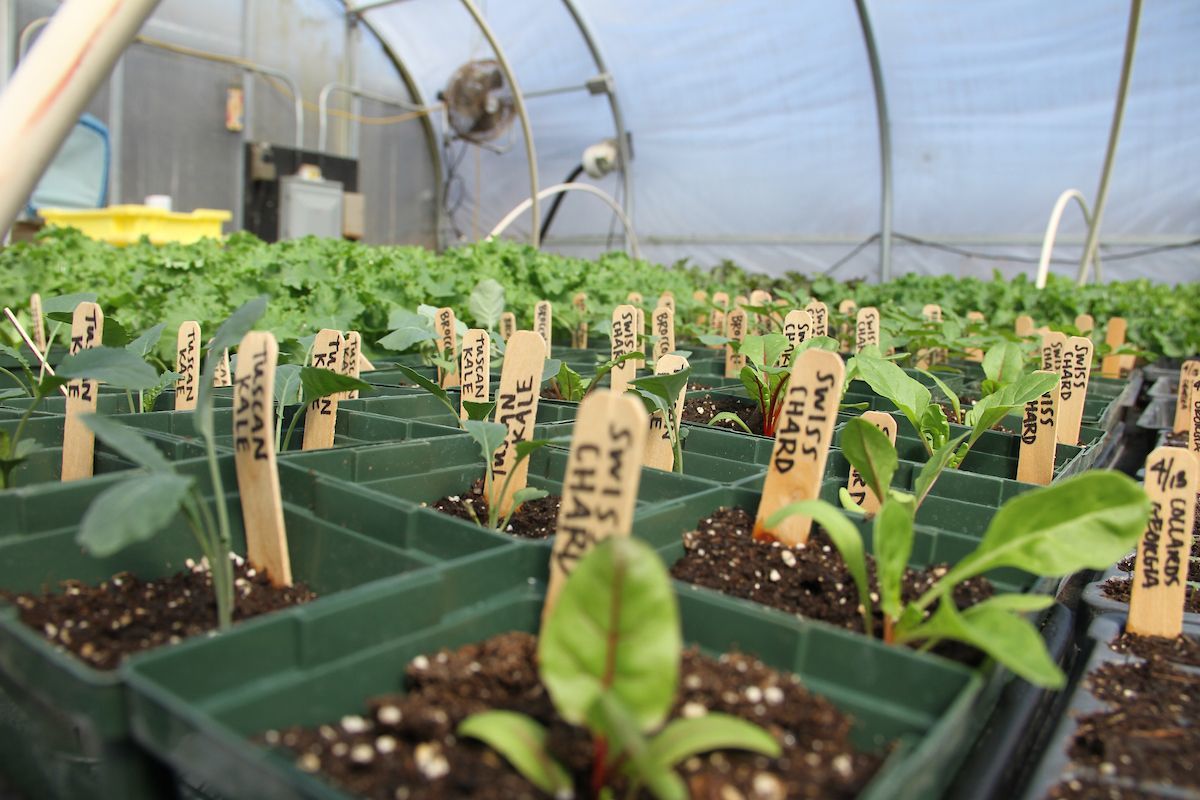
It’s that time of year again! Yes, breeding season. Every fall, the livestock team gears up to breed our cattle and sheep. While we have a ram to naturally service our ewes, this season we have decided to use artificial insemination to breed our cows.
Artificial insemination (AI) is the process of breeding cattle using frozen semen. We decided to use AI as our primary breeding method this season because it gives us more flexibility and control over the herd’s genetic makeup. Through AI, we will be able to introduce increased genetic diversity into next season’s calf crop without having to keep multiple bulls on the farm.
Now, how does this work exactly? To prepare, we searched through numerous cattle breed association catalogs and chose four different bulls to purchase semen straws from—two Red Devon bulls and two Dexter bulls. We then purchased a liquid nitrogen tank to store these straws and the tools needed to thaw the straws and deposit the semen into the cow’s uterus.
We worked with our large animal vet to establish a synchronization protocol to bring our cows into heat at the same time so they can be bred using AI all at once.
To begin the synchronization process, we inserted CIDRs (controlled intra-vaginal release devices) to release progesterone into the cow’s bloodstream and injected the cows with GnRH (gonadotropin-releasing hormone).
When a cow naturally ovulates, a structure called the corpus luteum (CL) forms at the site of ovulation and the CL is the primary source of progesterone in the cow’s system. As the CL grows, progesterone concentrations increase and remain elevated throughout pregnancy or the estrous cycle until a cow either calves or does not get pregnant. If she is not pregnant within 15 -18 days of a normal cycle, another hormone called prostaglandin is produced by the uterus and released to ‘regress’ or shrink the CL. This allows the cow to return to heat, ovulate, and start a new cycle. GnRH is another naturally occurring hormone that is produced during a cow’s estrous cycle. The brain releases GnRH to induce a dominant follicle that will ovulate which is the releasing of an egg. Through our synchronization protocol, we are mimicking this natural process.
We removed the CIDRs after seven days to stop the artificial release of progesterone and injected prostaglandin (PGF2a) to end the cycle. On day nine, we injected GnRH once again and on day ten, we began the insemination process.
After inseminating our cows during their first cycle, we wait about 21 days and watch to see if anyone has come back into heat. If so, we try again and then enlist the help of a ‘clean-up bull’ to service any cows we may have missed. Cattle AI has a 50-70% success rate and as this is our first year, we know we may miss some girls. To ensure all of our cows have calves next year, we will rent a bull who will be with them for six weeks.
Next year, our apprentices will be able to participate in this process and gain a sought-after skill in the cattle industry.
Look out next summer for photos of our calves!

